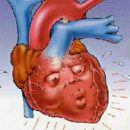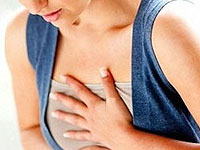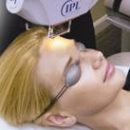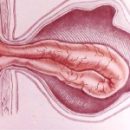What is a congenital heart disease? How does heart disease occur? Read in this article.
Content
Congenital heart defect
Congenital meaning «already existing at birth». Terms «Congenital heart defect» (UPU) and «Congenital heart disease » often used to designate the same. Heart disease — This is a defect, abnormality. The presence of vice is established with the improper functioning and development of the heart itself or the blood vessels adjacent to it.
If your child was born with a heartless heart, he has many chances to overcome this problem and live a healthy life afterwards. The latest achievements of diagnostics and surgery fully allow the most defects, even seemingly completely hopeless. Heart surgery continues to develop successfully, scientists explore ways to correct other heart defects.
After the diagnosis of your child's deficiency, some studies need to pass. They will help specialists — Children's cardiologists and surgeons — Understand whether the operation is needed in your case.
No two similar children in the world. Your doctor can give advice regarding the heart damage from your child. This booklet will help you better understand what the doctor will say, and will also tell you what to expect from surveys in which your child needs, about his find in the hospital, operations and recovery at home.
How do congenital heart defects arise?
More often there are difficult forms of heart defects. In most cases, it is not known what they are caused. Do not take the blame for problems available from your child.
Sometimes the cause of congenital defects may be viral infection. For example, if, during pregnancy, the mother falls sorrows, it is possible to violate the normal process of heart development. The causes of these violations may also be other viral diseases. Sometimes heredity plays the role in the occurrence of. In such cases, the definition of the heart can be observed in other children's children, but it rarely happens. The states in which many bodies are affected, for example, a downhill may also affect the heart.
Women using alcohol or drugs during pregnancy are highly risky to give birth to children's vice. The appearance of every year of many new heart defects is related to the use of alcohol or drug.
Other factors affecting the development of the heart are studied. In truth, the causes of the majority of PPU are still unknown.
The frequency of congenital heart defects
At least 8 out of 1000 newborns have heart disease. This is almost 1% of the total number of children born.
In the United States annually appears on about 25—30 thousand. Children with UPU.
In the CIS countries, about 40 thousand children with UPU are born annually.
Normal heart and how it works
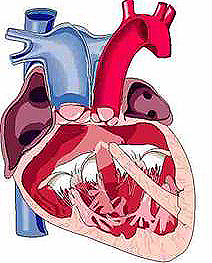 Normal heart — strong, tirelessly working muscular pump. Its size with a human fist. Heart has four cameras. Two tops are called atria, and two lower — ventricles. The atrium is separated by the interproveserving partition. The ventricles are separated by the interventricular partition.
Normal heart — strong, tirelessly working muscular pump. Its size with a human fist. Heart has four cameras. Two tops are called atria, and two lower — ventricles. The atrium is separated by the interproveserving partition. The ventricles are separated by the interventricular partition.
Blood consistently comes from atria in the ventricles, and then to the main arteries due to the four cardiac valves. Valves open and closed, missing blood only in one direction.
Heart valves — This is a three-skilled, or a tricuspid valve located between the right atrium and the right ventricle; pulmonary valve between the right ventricle and the pulmonary artery; Mitral valve between left atrium and left ventricle; and aortic valve between left ventricle and aorta. Each valve has a certain number of sash. The mitral valve has two sash, the rest — three sash.
«Blue» or venous blood, poor oxygen, returns to the heart after passing along the vessels of the whole body. It proceeds to the heart of the veins and finds himself in the right of atrium. This camera empties through the tricuspid valve in the right ventricle.Right ventricle pumps blood under low pressure through the pulmonary valve in the pulmonary artery. From there, blood goes into the lungs, where it is enriched with oxygen.
After that, it returns to the pulmonary veins in the left atrium. Then passing through the mitral valve, falls into the left ventricle. Left ventricle pumps oxygen-enriched «Aluu» or arterial blood through aortic valve in aorta. Aorta carries blood further, starting a new cycle of blood promotion through body vessels. Blood pressure in the left ventricle corresponds to the pressure that is measured on hand.


